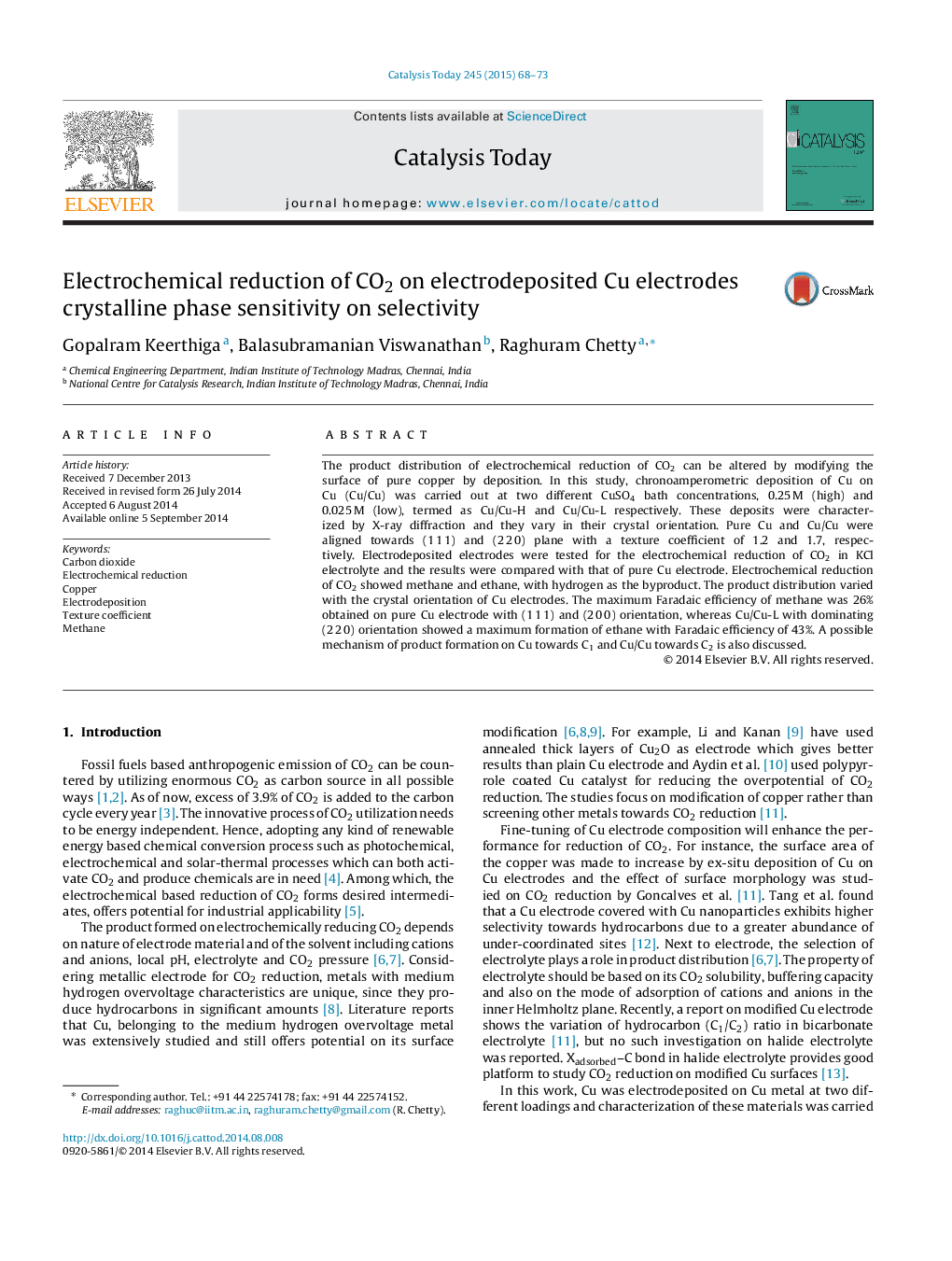| Article ID | Journal | Published Year | Pages | File Type |
|---|---|---|---|---|
| 54041 | Catalysis Today | 2015 | 6 Pages |
•Electrodeposition of Cu on Cu substrate varied the crystal plane of Cu surface.•Electrochemical reduction of CO2 favors methane on bare Cu.•Ethane is predominantly formed on electrodeposited Cu at higher potential.
The product distribution of electrochemical reduction of CO2 can be altered by modifying the surface of pure copper by deposition. In this study, chronoamperometric deposition of Cu on Cu (Cu/Cu) was carried out at two different CuSO4 bath concentrations, 0.25 M (high) and 0.025 M (low), termed as Cu/Cu-H and Cu/Cu-L respectively. These deposits were characterized by X-ray diffraction and they vary in their crystal orientation. Pure Cu and Cu/Cu were aligned towards (1 1 1) and (2 2 0) plane with a texture coefficient of 1.2 and 1.7, respectively. Electrodeposited electrodes were tested for the electrochemical reduction of CO2 in KCl electrolyte and the results were compared with that of pure Cu electrode. Electrochemical reduction of CO2 showed methane and ethane, with hydrogen as the byproduct. The product distribution varied with the crystal orientation of Cu electrodes. The maximum Faradaic efficiency of methane was 26% obtained on pure Cu electrode with (1 1 1) and (2 0 0) orientation, whereas Cu/Cu-L with dominating (2 2 0) orientation showed a maximum formation of ethane with Faradaic efficiency of 43%. A possible mechanism of product formation on Cu towards C1 and Cu/Cu towards C2 is also discussed.
Graphical abstractFigure optionsDownload full-size imageDownload high-quality image (146 K)Download as PowerPoint slide
